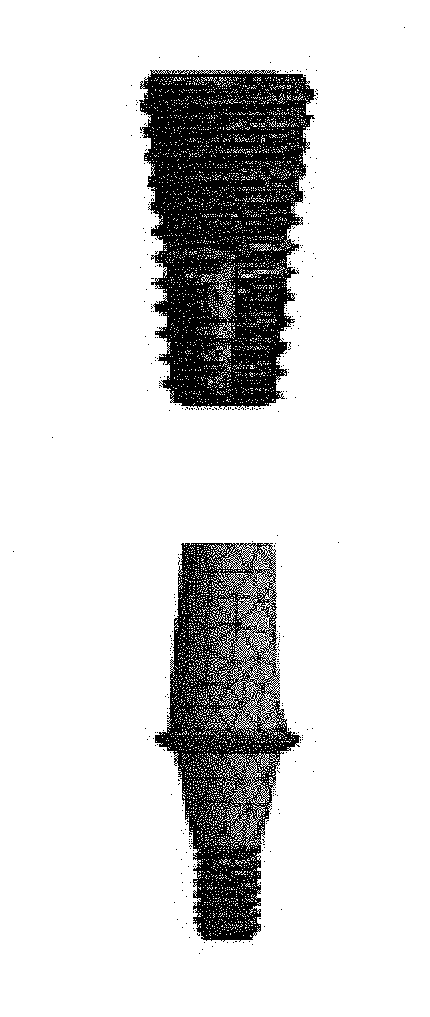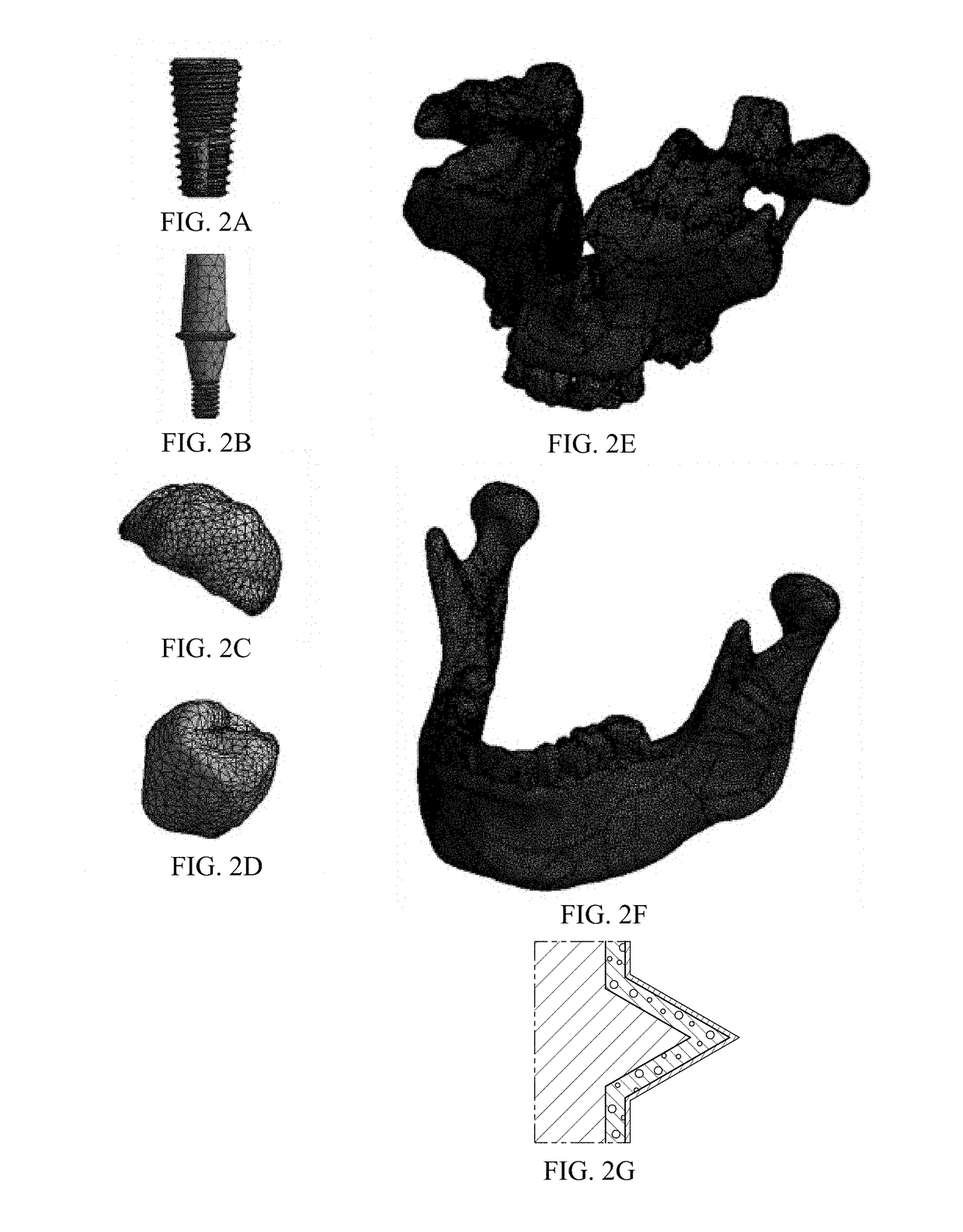Prosthesis for dental replacement, method of redistributing stress and stress analysis method
- Summary
- Abstract
- Description
- Claims
- Application Information
AI Technical Summary
Benefits of technology
Problems solved by technology
Method used
Image
Examples
example 1
Purification of SB Cells
[0053]Peripheral blood from each patient is drawn and collected in anticoagulant tubes. The blood is then processed by StemBios Technologies Inc. with its proprietary method to create a mixture of SB cells. These cells were then resuspended in DPBS with final concentration of 1×106 to 1×107 SB cells / mL.
[0054]To characterize the SB mixture, the cells were analyzed using flow cytometry. The size of SB cells, as confirmed by flow cytometry, was smaller than 6 micrometers. In addition to size, the SB mixture was investigated for the presence of similar small stem cells, blastomere-like stem cells (B LSCs) and very-small embryonic-like stem cells (VSELs), using the CD66e and CD133 markers, respectively. CD66e and CD133 were used to ensure the absences of BLSCs and VSELs in the SB mixture. The result demonstrated less than 1% of the cells in the SB mixture expressed either CD66e or CD133, suggesting that the VSEL and BLSC concentrations in this mixture were insigni...
example 2
Properties Evaluation of the SLAffinity-Treated Surface
[0055]The scanning electron microscopy (SEM; JEOL JSM-6500F) was employed to analyze the surface morphologies of the SLAffinity-treated samples. Moreover, wettability examinations were performed using the sessile drop method using a GBX DGD-DI contact angle goniometer. Liquid deionized water was adopted in the test. Contact angle measurements were measured using at least five drops for each sample in order to obtain statistical averages.
[0056]The SLAffinity-treated surfaces are subjected to SEM to evaluate the effect of SLAffinity on the microstructural variation of the implant surface as shown in FIG. 3C. The SEM showed a homogenous and porous surface with nanoholes as depicted in FIG. 3C, where the average diameter of the nanoholes is approximately 500 nm. The contact angles of distilled water on SLAffinity-Ti and untreated surfaces were examined. The untreated surfaces had the lower value (83.21±1.25), whereas SLAffinity-Ti s...
example 3 finite
[0057]A 3D maxilla model was rebuilt using computed tomography (CT, Light Speed, GE) images as shown in FIG. 1A, FIG. 1B, FIG. 1C, FIG. 1D, FIG. 1E and FIG. 1F. A set of images was derived to describe the surface of the contour of the human maxilla. AVIZO (Internet Securities, Inc.) was used to detect the various boundary components of the maxilla. The biomechanical properties of the cortical bone, cancellous bone, and titanium have been described previously (Olaya, J. J., et al., Comparative study of chromium nitride coatings deposited by unbalanced and balanced magnetron sputtering. Thin Solid Films, 2005. 474(1-2): p. 119-126; dos Santos, I., et al., Effect of variable heat transfer coefficient on tissue temperature next to a large vessel during radiofrequency tumor ablation. BioMedical Engineering OnLine, 2008. 7(1): p. 21; Savvides, N. and T. J. Bell, Hardness and elastic modulus of diamond and diamond-like carbon films. Thin Solid Films, 1993. 228(1-2): p. 289-...
PUM
 Login to View More
Login to View More Abstract
Description
Claims
Application Information
 Login to View More
Login to View More - R&D Engineer
- R&D Manager
- IP Professional
- Industry Leading Data Capabilities
- Powerful AI technology
- Patent DNA Extraction
Browse by: Latest US Patents, China's latest patents, Technical Efficacy Thesaurus, Application Domain, Technology Topic, Popular Technical Reports.
© 2024 PatSnap. All rights reserved.Legal|Privacy policy|Modern Slavery Act Transparency Statement|Sitemap|About US| Contact US: help@patsnap.com










